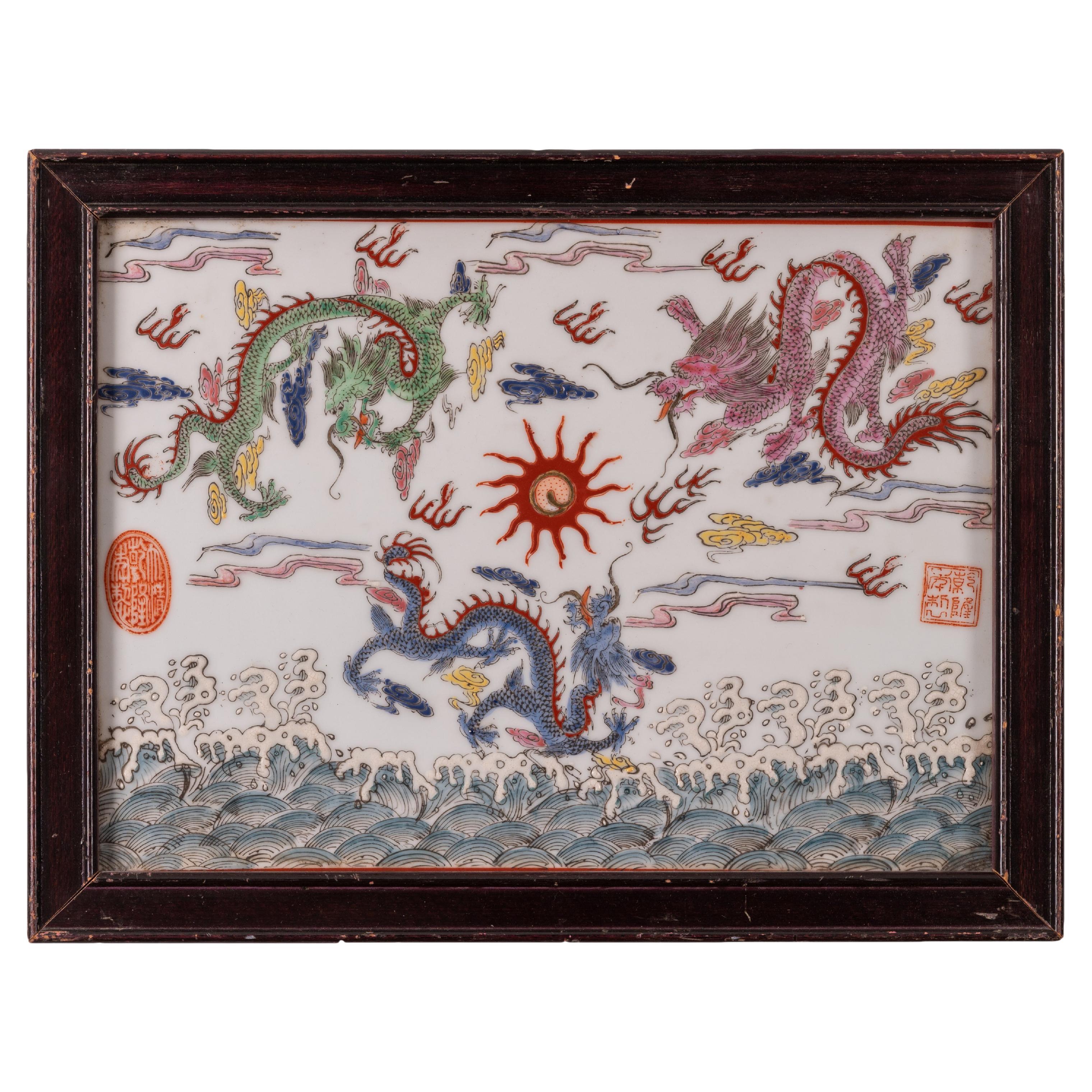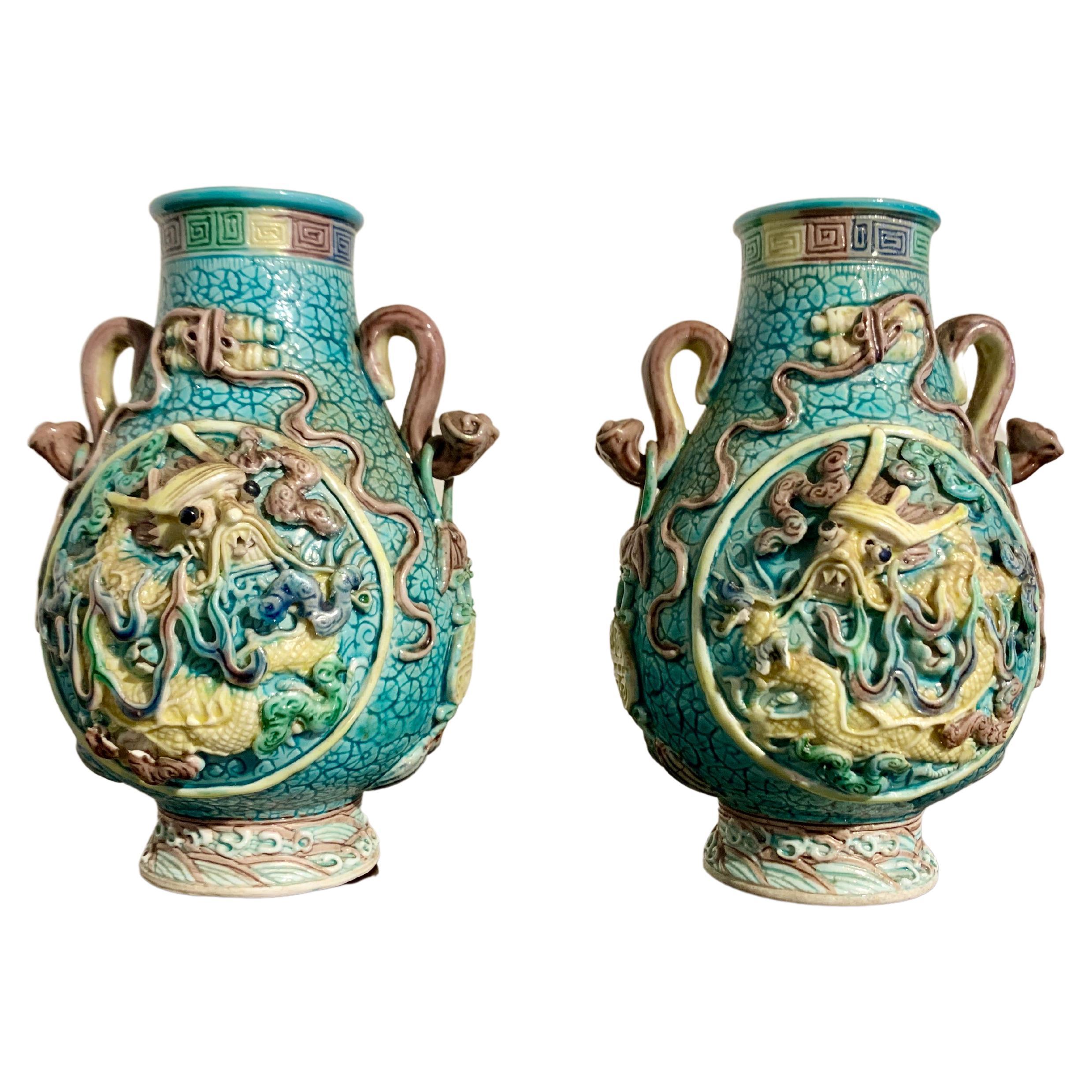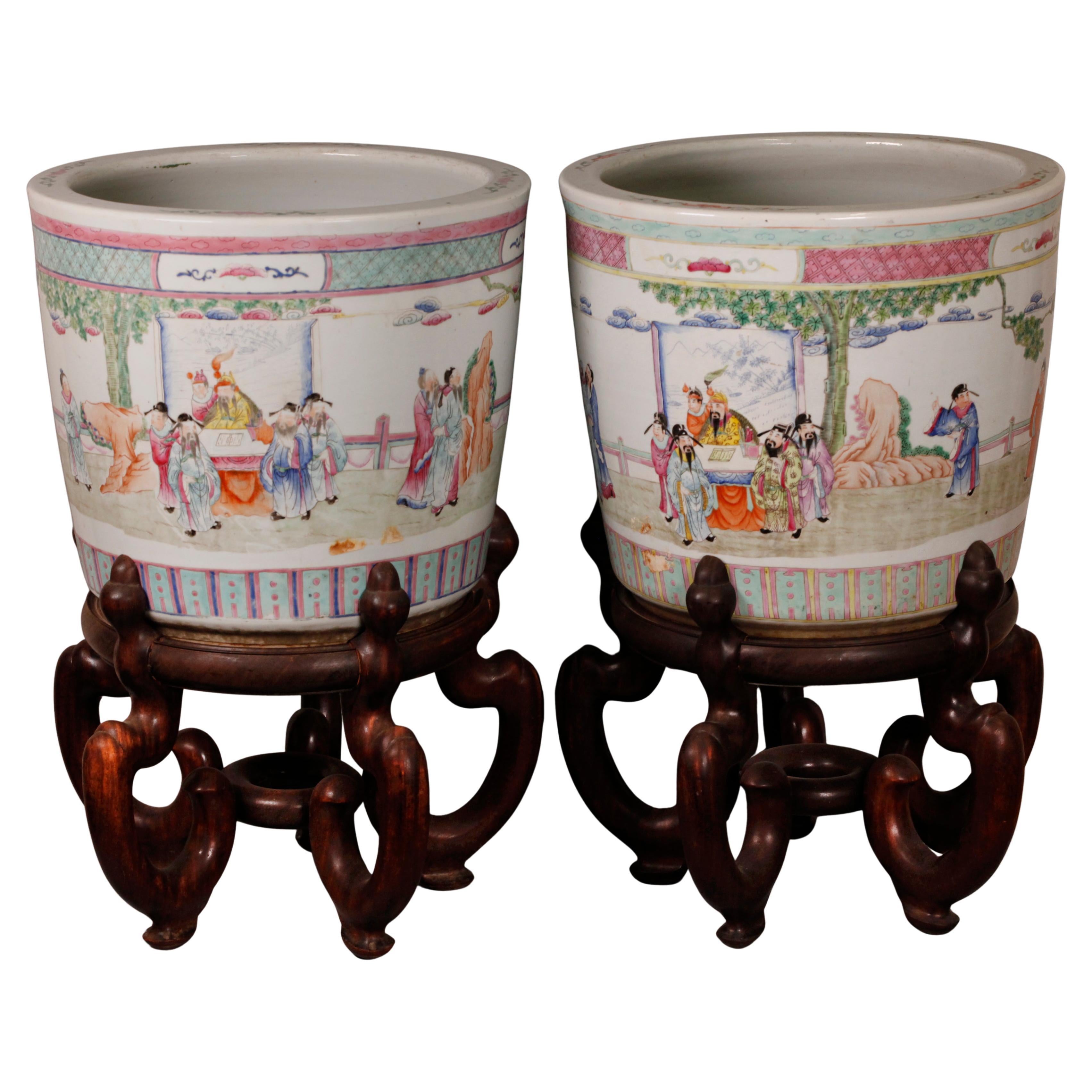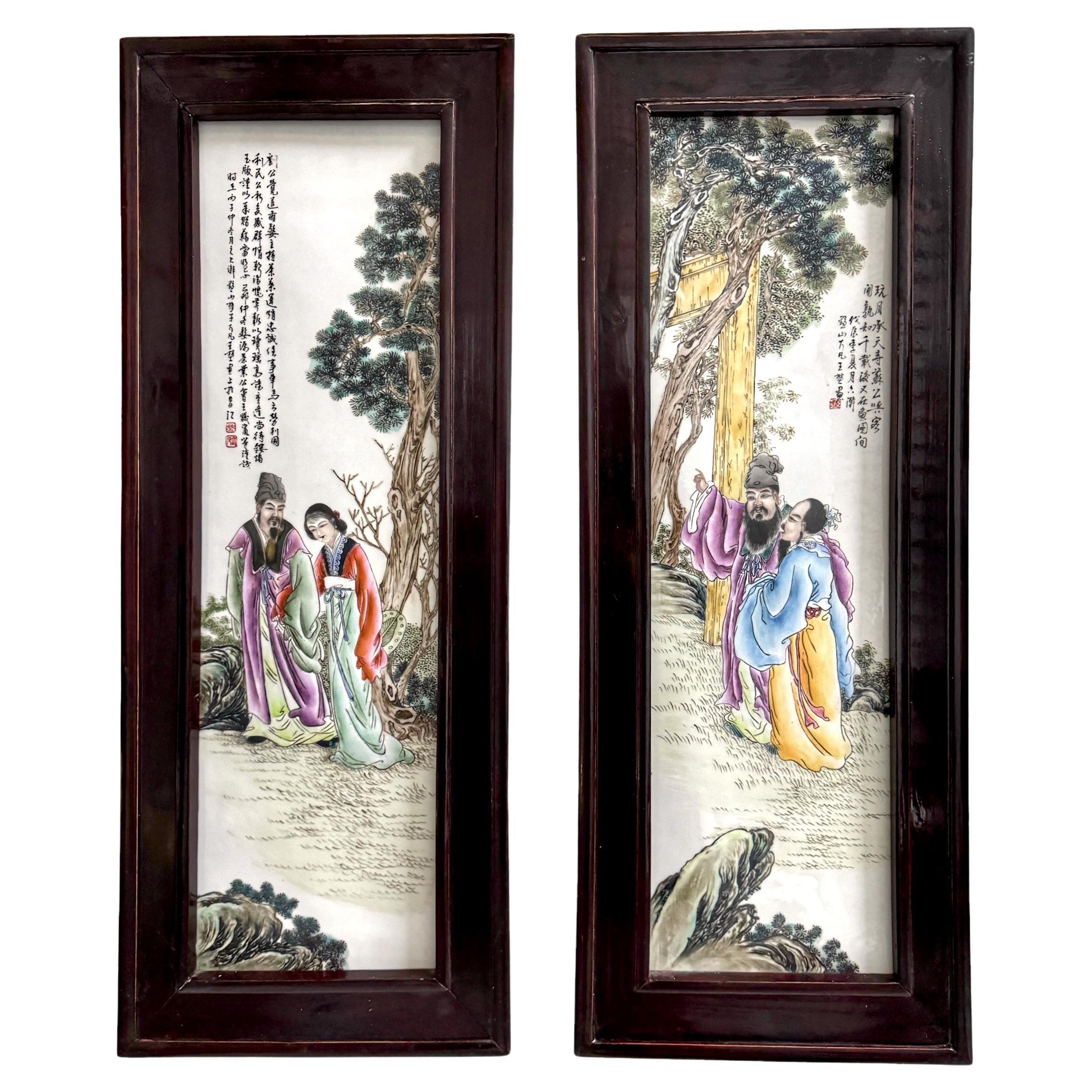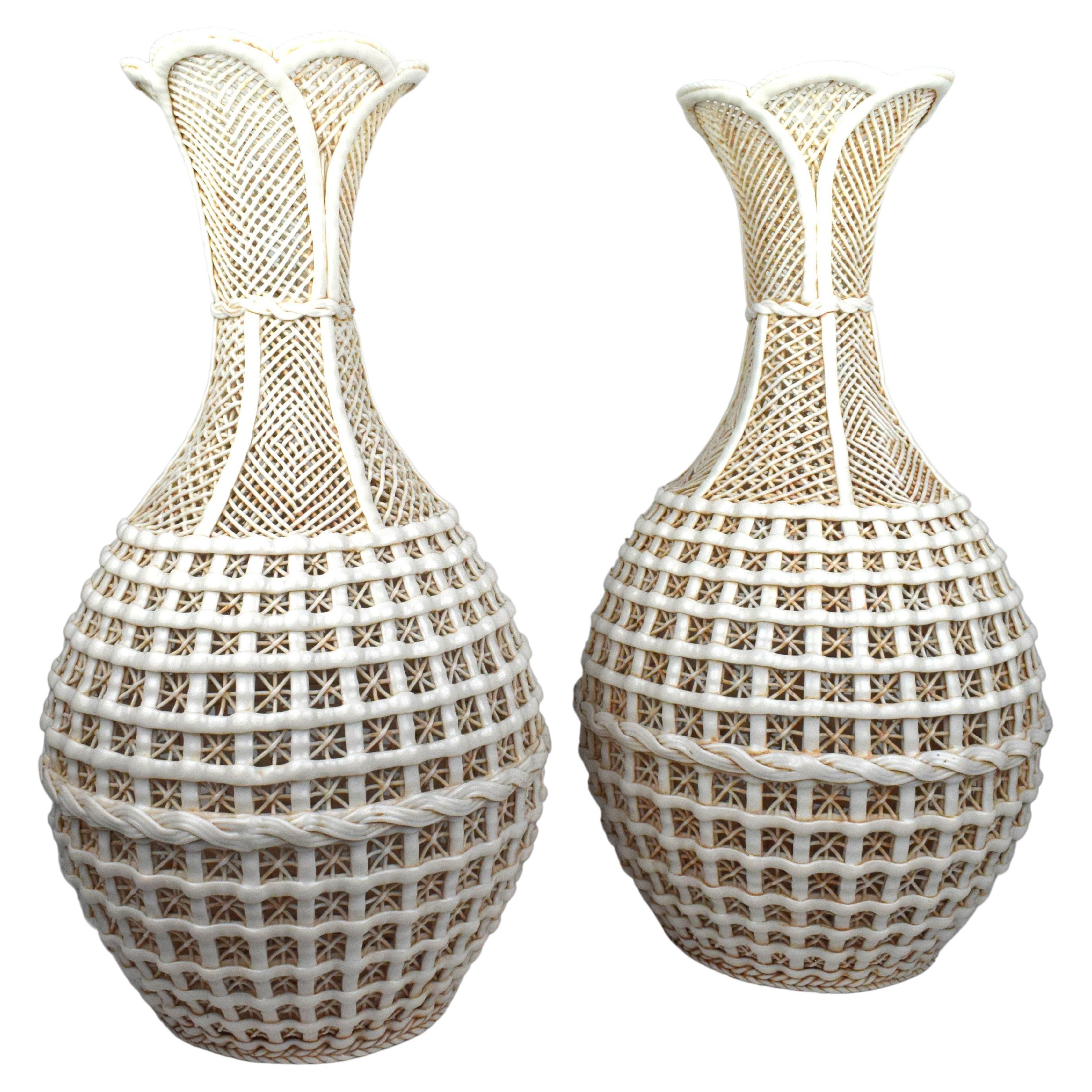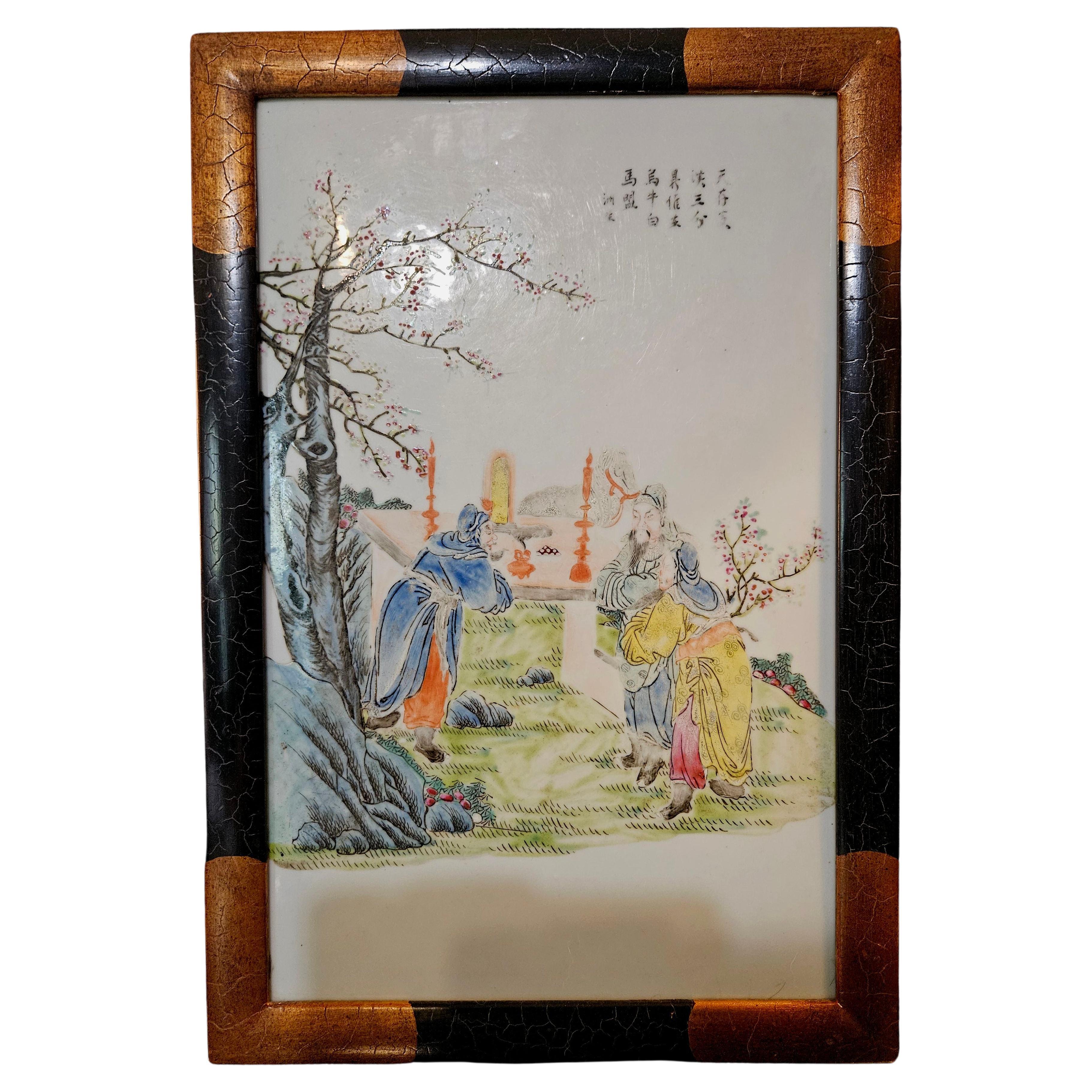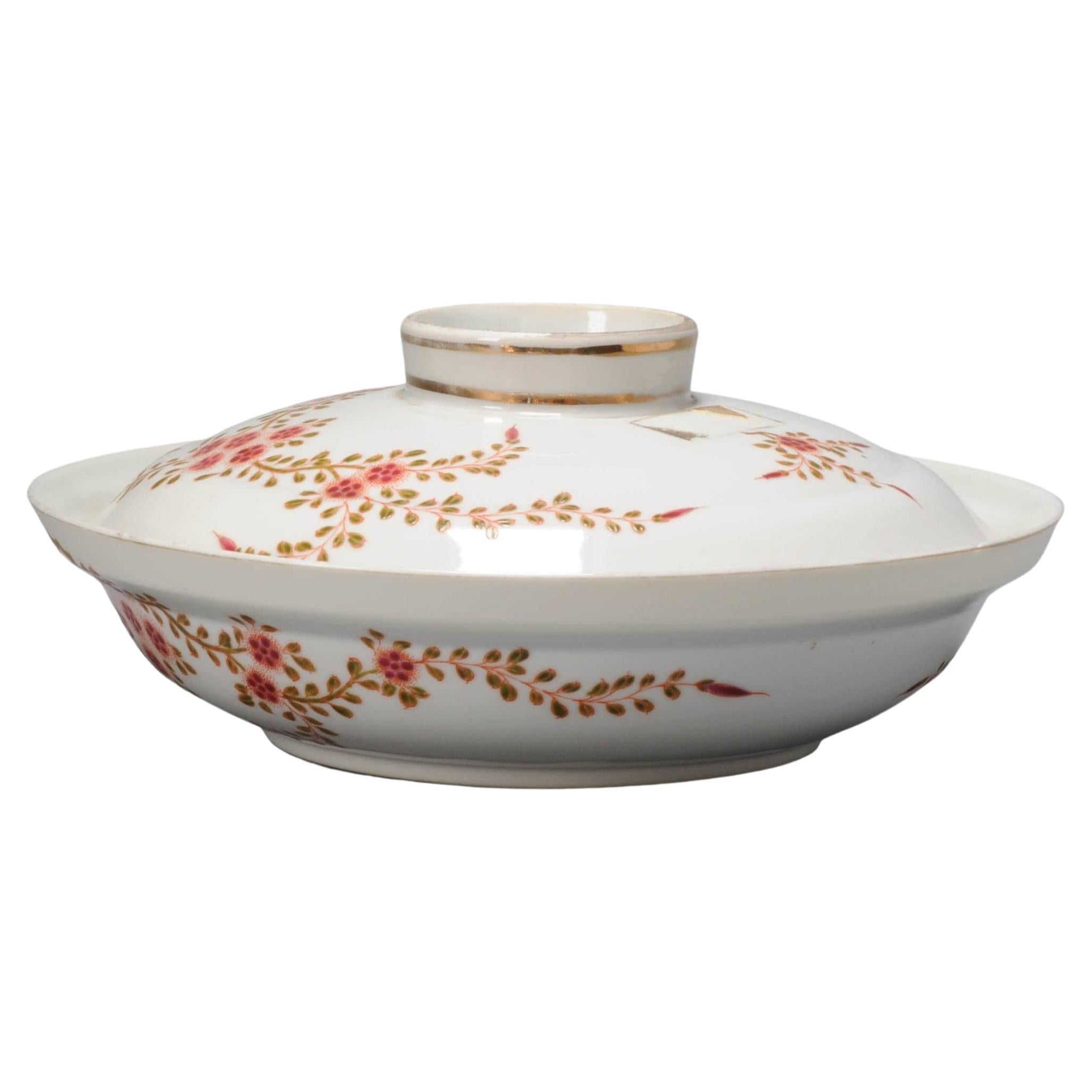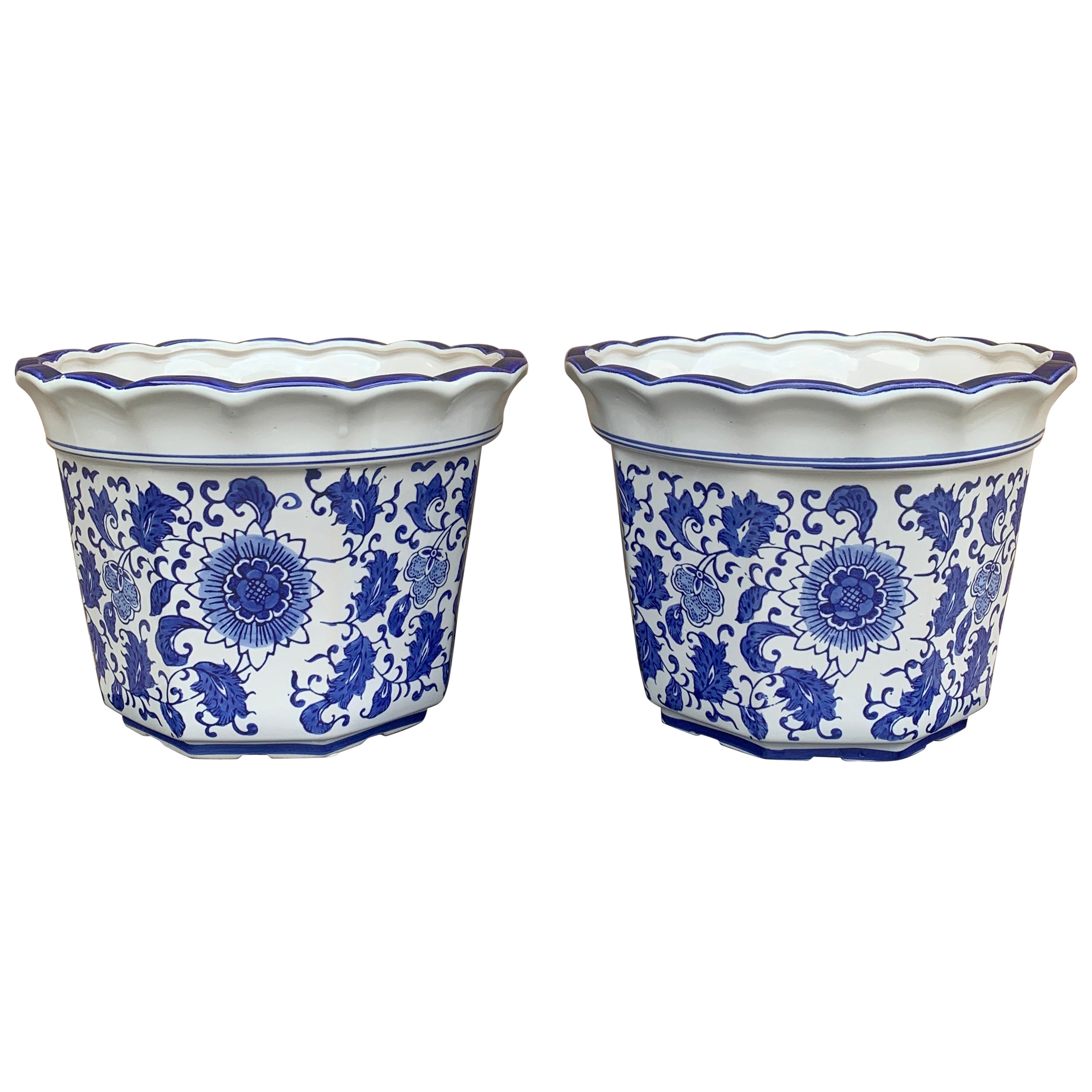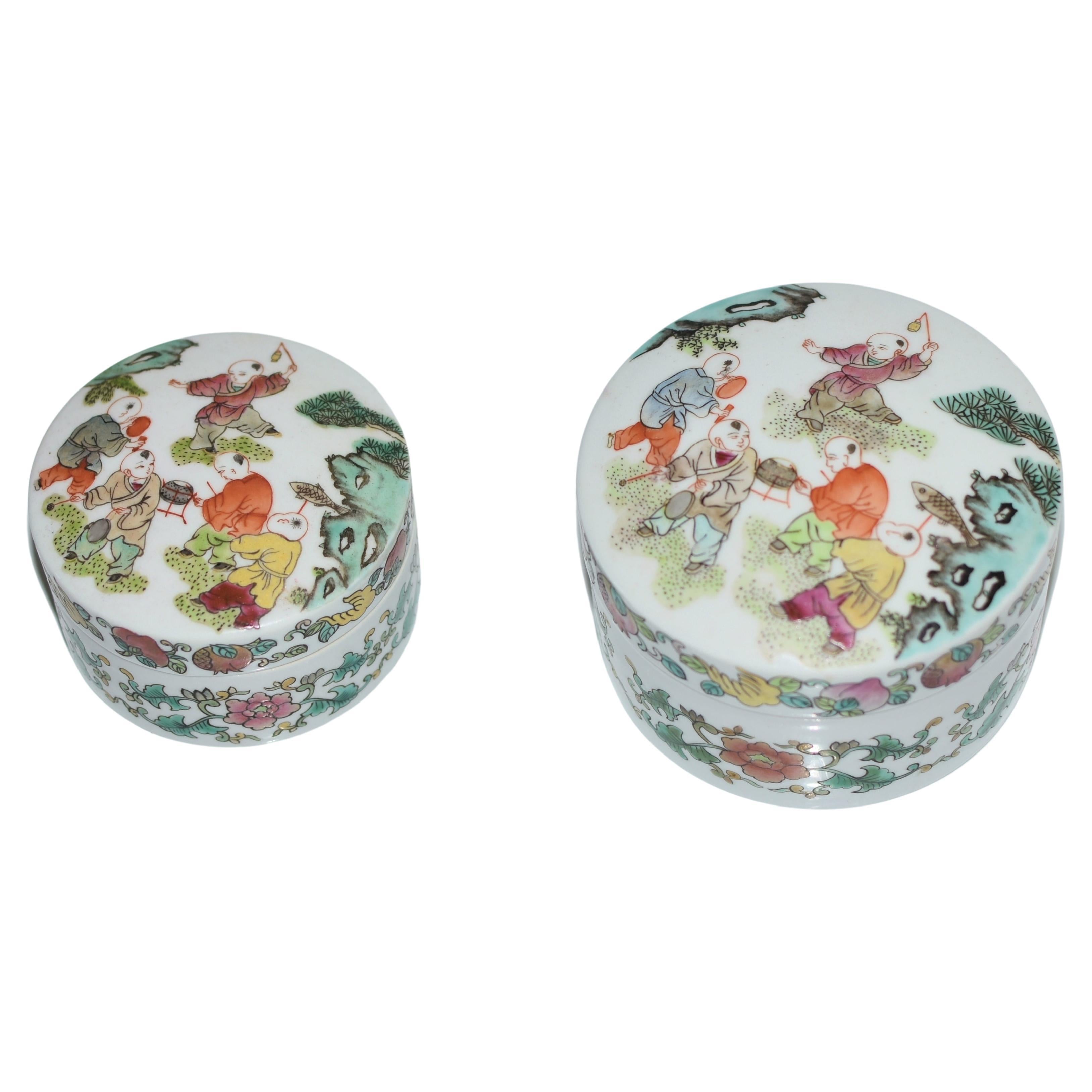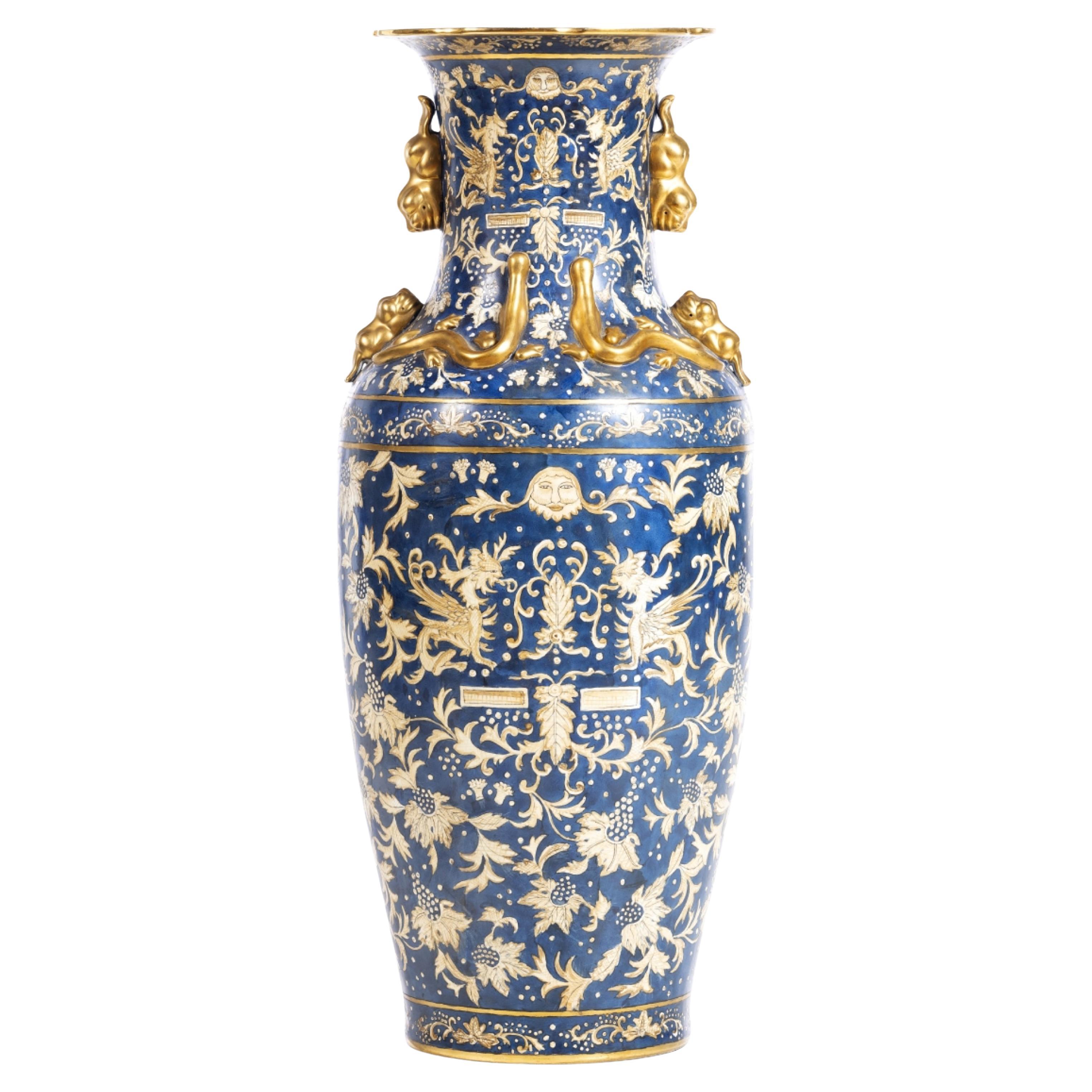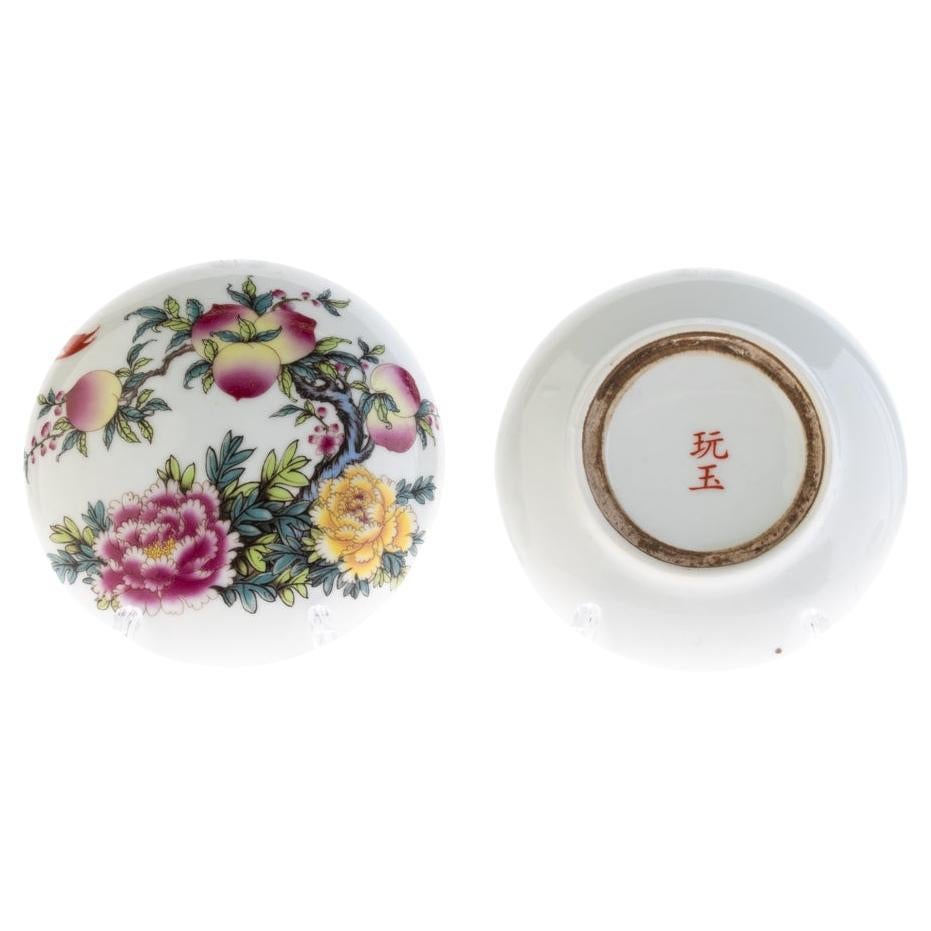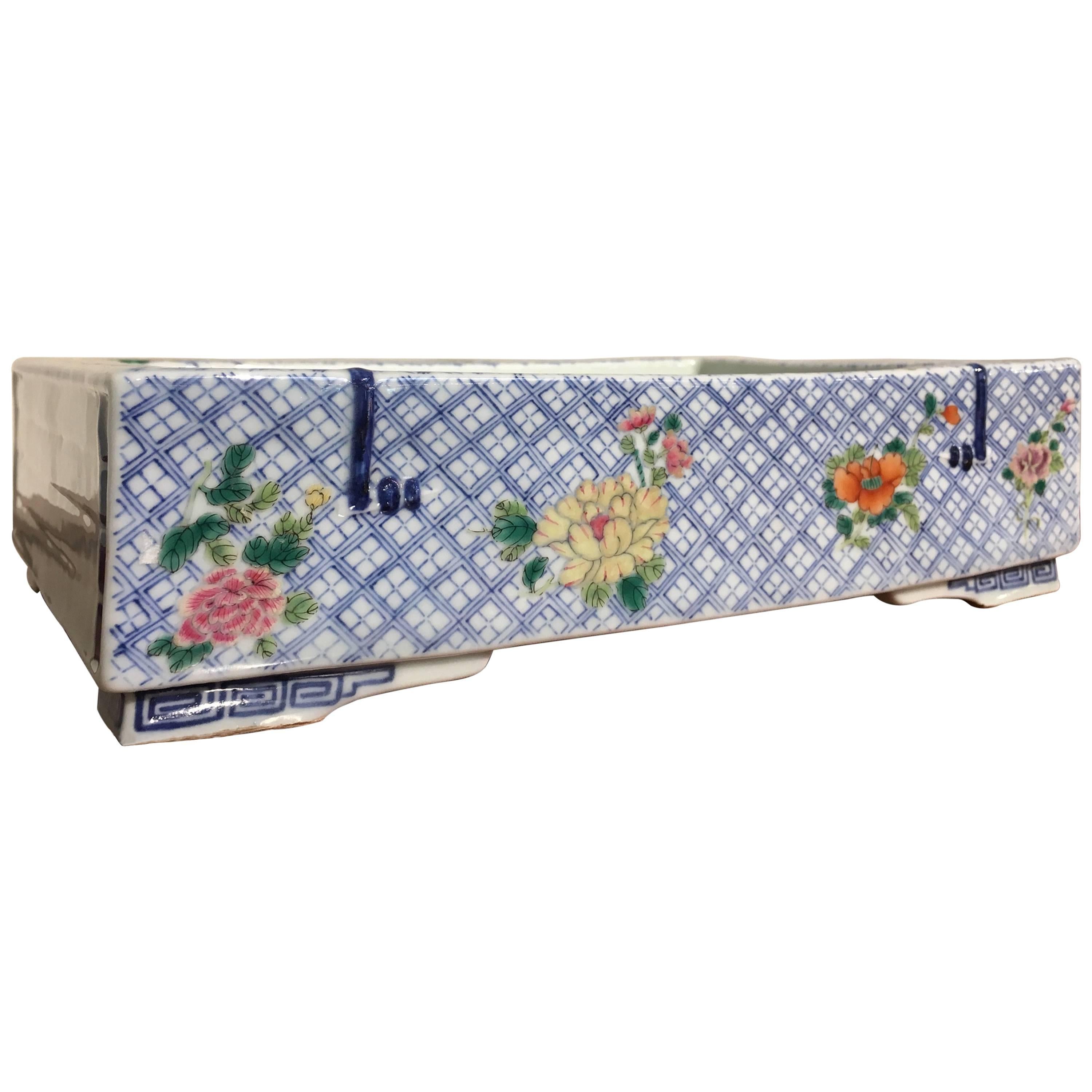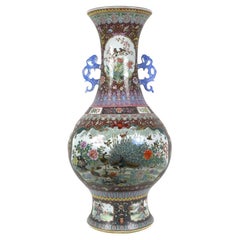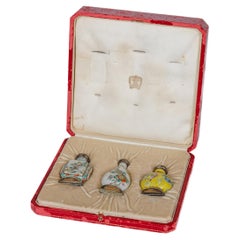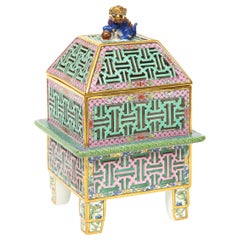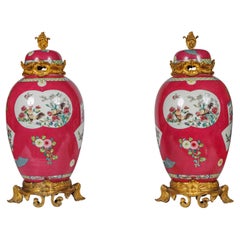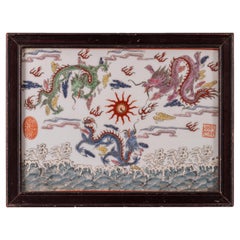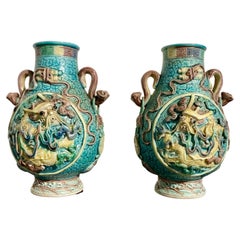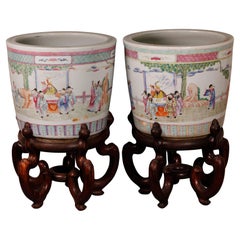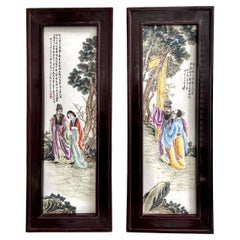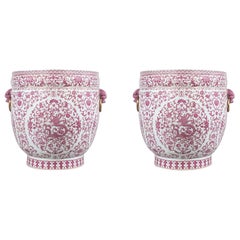
A Massive Pair of Chinese Pink and White Dragon Porcelain Planters, Republic
View Similar Items
Video Loading
Want more images or videos?
Request additional images or videos from the seller
1 of 9
A Massive Pair of Chinese Pink and White Dragon Porcelain Planters, Republic
$35,000List Price
About the Item
- Dimensions:Height: 22 in (55.88 cm)Diameter: 24 in (60.96 cm)
- Materials and Techniques:
- Place of Origin:
- Period:
- Date of Manufacture:20th Century
- Condition:Wear consistent with age and use.
- Seller Location:Queens, NY
- Reference Number:1stDibs: LU1798237091882
About the Seller
5.0
Vetted Professional Seller
Every seller passes strict standards for authenticity and reliability
Established in 1980
1stDibs seller since 2016
63 sales on 1stDibs
Typical response time: 1 hour
Authenticity Guarantee
In the unlikely event there’s an issue with an item’s authenticity, contact us within 1 year for a full refund. DetailsMoney-Back Guarantee
If your item is not as described, is damaged in transit, or does not arrive, contact us within 7 days for a full refund. Details24-Hour Cancellation
You have a 24-hour grace period in which to reconsider your purchase, with no questions asked.Vetted Professional Sellers
Our world-class sellers must adhere to strict standards for service and quality, maintaining the integrity of our listings.Price-Match Guarantee
If you find that a seller listed the same item for a lower price elsewhere, we’ll match it.Trusted Global Delivery
Our best-in-class carrier network provides specialized shipping options worldwide, including custom delivery.More From This Seller
View AllMonumental Chinese Famille Rose Porcelain "Peacock" Palace Vase
Located in Queens, NY
A monumental Chinese famille rose porcelain "Peacock" palace vase, Republic period.
Magnificent quality and palace sized Chinese hu-form vase with side h...
Category
Late 20th Century Chinese Qing Ceramics
Materials
Porcelain
Cartier Silver-Mounted Chinese Porcelain Snuff Bottles in Original Box
By Cartier
Located in Queens, NY
An Exquisite Suite of Three French Silver-Mounted Chinese Porcelain Snuff Bottles with Coral and Sapphire Adornments by Cartier, Presented in Original Fitted Box
This exceptional su...
Category
Antique 19th Century French Qing Ceramics
Materials
Coral, Silver
Rare Meissen Marcolini Porcelain Chinoiserie Incense Burner Vase and Cover
By Meissen Porcelain
Located in Queens, NY
A rare Meissen Marcolini Porcelain Chinoiserie incense burner vase and cover, made for the Chinese market, circa 1800, blue cross swords and star mark, Pressnummer 58
A Museum Quality Piece.
Painted in the sought after famille rose palette with sprigs of indianische Blumen and enriched in gilding, the simulated pierced body supported by four feet painted with stylized dragons, the pierced cover with a Buddhist lion finial.
10" high x 6" wide x 6" deep
The shape of this piece, which appears to be unrecorded in the literature, is inspired by similar Chinese porcelain censers from the Qing Dynasty, Kangxi Period (1654-1722). An example in the Palace Museum, Beijing, is illustrated by Li Yi-hua in Qing Porcelain of Kangxi, Yongzheng and Qianlong Periods from the Palace Museum Collection, Hong Kong, 1989, pl. 65. Another in the British Museum, London (museum no. PDF, A.812) is catalogued as a perfume-holder.
These porcelain examples are in turn inspired by ancient Chinese bronzes from both the Shang (1600-1046 BC) and the Zhou (1046-246 BCE) dynasties, an example of which was sold anonymously by Christie's New York, 22 March 2019, lot 1601. This chain of inspiration tracking backwards from the 19th century to antiquity provides a clear example of how ceramics, and indeed other mediums, are able to influence and motivate the works of later generations.
For a Meissen porcelain snuff...
Category
Antique Late 18th Century German Chinoiserie Ceramics
Materials
Porcelain
Magnificent Pair of Ormolu-Mounted Pink Chinese Porcelain Vases
Located in Queens, NY
Magnificent Pair of Ormolu-Mounted Pink Chinese Porcelain Vases – A Fusion of East and West
This fabulous and large pair of 19th-century Louis XVI style ormolu-mounted Chinese porcelain covered vases / jars is a stunning testament to the opulence and artistry of the era. The exquisite pink ground porcelain, an export creation from late 19th-century China, features vivid hand-painted enamel decorations depicting majestic Chinese roosters...
Category
Antique 19th Century French Louis XVI Garniture
Materials
Bronze, Ormolu
Magnificent Pair of Ormolu-Mounted Pink Chinese Porcelain Three-Light Cadelabras
Located in Queens, NY
A Magnificent Pair of Ormolu-Mounted Pink Chinese Porcelain Three-Light Candelabras – A Masterpiece of East and West
This fabulous and large pair of 19th-century Louis XVI style orm...
Category
Antique 19th Century French Louis XVI Candelabras
Materials
Bronze, Ormolu
Massive Museum Pair of Meiji Period Japanese Cloisonne Enamel Chargers Plates
Located in Queens, NY
A massive Museum pair of Meiji Period Japanese Cloisonne Enamel chargers plates, attributed to Hayashi Kodenji Studio, 19th century.
Each measuring ...
Category
Antique 19th Century Japanese Meiji Decorative Art
Materials
Enamel
You May Also Like
Chinese Republic Porcelain Three Dragon Plaque
Located in Savannah, GA
A Chinese Republic period porcelain plaque with three dragons.
sight: 11 ¾ by 8 ½ inches
frame: 13 ¾ by 10 ½ inches
Category
Early 20th Century Chinese Other Ceramics
Materials
Porcelain, Wood
Pair Small Chinese Dragon Vases, Molded and Glazed Porcelain, Republic Period
Located in Austin, TX
A fabulous pair of small Chinese molded and glazed biscuit ware porcelain dragon vases with loose eyes and apocryphal Qianlong mark, Republic Period, circa 1920, China.
The small ...
Category
Vintage 1920s Chinese Qing Ceramics
Materials
Porcelain
pair of Chinese porcelain planters, Republican period
Located in New York, NY
hardwood stands shown in photos are included with these planters; each porcelain planter is decorated with a multicolor figural scene; planter only: 14in(H) x 15.5in(diameter); overa...
Category
Early 20th Century Chinese Ceramics
Materials
Porcelain
Pair Chinese Republic Porcelain Panels, Scholars in Landscape, Inscribed
Located in West Palm Beach, FL
Pair Chinese Republic Porcelain Panels, Scholars in Landscape, Inscribed
China, 20th Century
A beautiful pair of Chinese Republic period porcelain...
Category
20th Century Chinese Chinese Export Ceramics
Materials
Brass
$2,384 Sale Price / set
20% Off
Porcelain plaque. China. Republic period ca. 1930.
Located in Norton, MA
Porcelain plaque. China. Republic period ca. 1930. Famille rose decoration of the peach garden oath.
Framed: 17.25 x 11.75 in.
Image size: 15 x 9.5 in.
Category
Early 20th Century Asian Ceramics
Materials
Porcelain
Chinoiserie Large Blue and White Porcelain Planters, Pair
Located in Elkhart, IN
A stunning pair of blue & white porcelain Chinoiserie planters or jardinieres
China, 21st century
Measures: 12.63"W x 12.63"D x 9.25"H.
Excellent condition.
Category
21st Century and Contemporary Chinese Chinoiserie Ceramics
Materials
Ceramic
Recently Viewed
View AllMore Ways To Browse
Dragon Tapestry
Foo Dragons
Vintage Pink Planter
Ceramic Head Planters
Dog Planter
Massive Pair Of Chinese
Foo Dog Planter
Antique India Exports
Meiji Charger
16th Century Chinese Porcelain
Chinese Famille Verte Porcelains
Korean White Porcelain
Blue Phoenix China
Chinese Blue White Bowl
Antique Kutani
Antique Rose Medallion China
Imari Porcelain Charger
Large Japanese Charger
